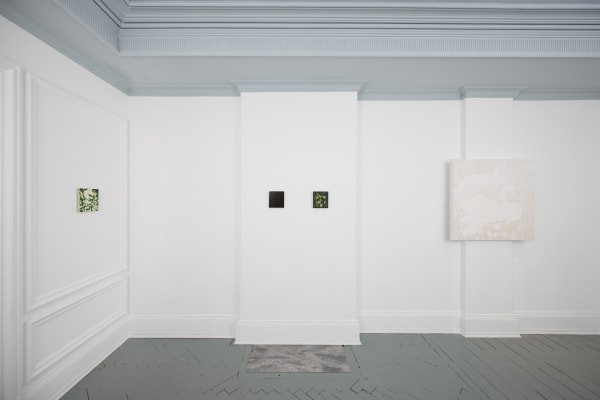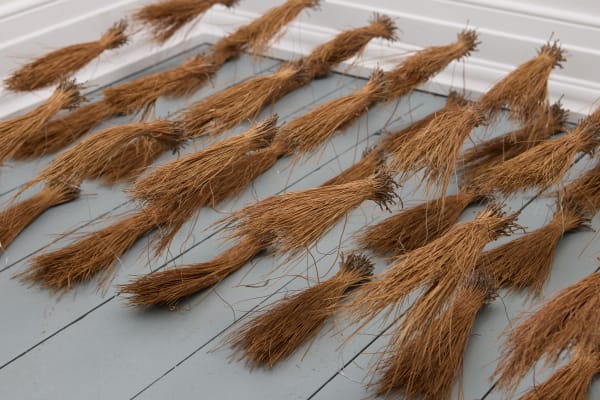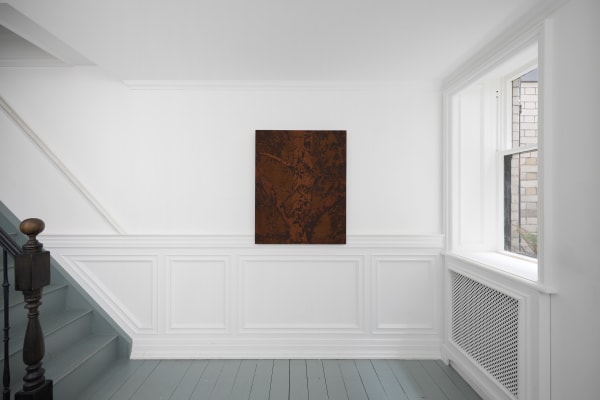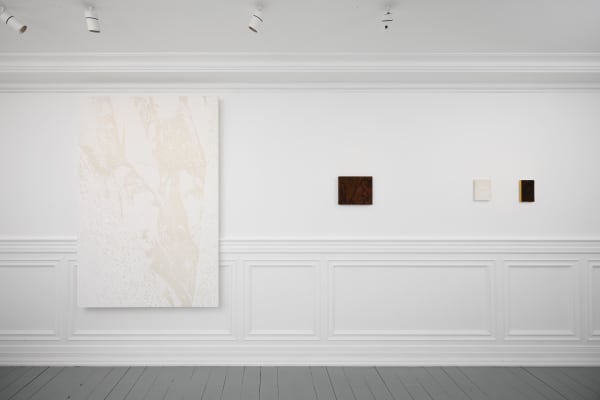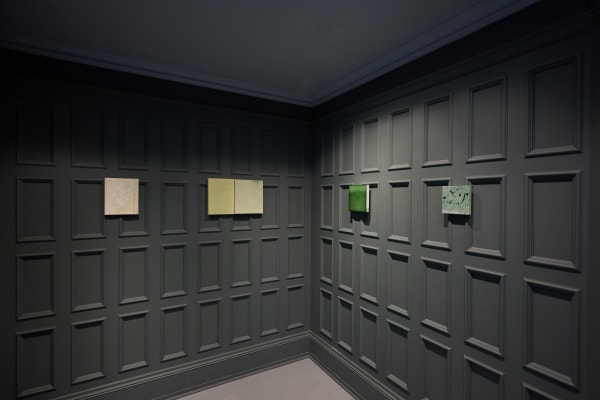Seraphina Mutscheller: Woodwind
Working at the edge between visibility and dissolution, Mutscheller's surfaces emerge through continuous cycles of composition and decomposition. Built from layers of self-made paint, seed lac, and luminous gesso, each work undergoes processes of erasure: sanded, peeled, and cut away, then mantled again by pigment in solution. This oscillation between making and unmaking enacts the generative flux of natural terrain. Like fungi decomposing matter so that new life might compose, erasure generates moments of light, glimpses into layered temporalities.
The white-in-white paintings perform a particular kind of magic. As one moves in relation to them, the trees, stones or swans seem to recede and emerge - a shift akin to clouds passing between sun and viewer. Within this interplay between disappearance and persistence, colour reveals itself as plural: white becomes yellow or tinged with blue, inflected by the brown of wood beneath. The paintings' boundaries soften, bleeding into space as space bleeds back, dappled with light and shadows of time.
In the brown paintings, materiality becomes inseparable from representation. The forest ceases to be depicted and begins to be physically present. Black pigments are made from charcoal collected from the burnt-out hollows of cedar trees visited in Vancouver this summer; browns are ground from their bark. The canvas itself finds its colour through a mud-dying process. The substance of trees - their char, their bark, the earth they grew in - distills into the paintings' tones. What appears as landscape is landscape: suspended as pigment, embedded in the warp and weft of canvas. Each work becomes an ecosystem where different material states exist in mutual interdependence.
Punctuating the exhibition, the lacquer works create deep spaces through their multiple translucent layers. Light becomes trapped within the surface, glowing from beneath while shadows gather in the depths. Some works hold representational forms - trees, forests - while others dissolve into softer, more minimal territories, approaching colour fields where imagery gives way to pure luminosity. Thin rivers of light pool in darkness, shifting as one moves around them.
The act of painting becomes a conversation - a meeting where individual perspectives dissolve and the natural world is granted its own point of view. Her paintings embody a polyphonic structure, like music where several melodies entwine and coalesce into one without ceasing to be many. What unfolds is the subjective sensory experience of those entering into painted space, and the space's own being-entered-into.
Throughout the gallery, Mutscheller brings the outside world in. Willow leaves collected from Hampstead Heath are sewn together with thin thread, suspended as a vertical green garland in the front window, while downstairs pine needles are bound together and arranged in spatial dialogue with the paintings. These interventions dissolve the boundary between gallery and landscape, allowing the natural world to enter the exhibition as presence rather than representation.
Mutscheller’s work acknowledges vast agencies beyond the human. Her practice attends to what she calls “the slow breathing of the earth" - a rhythm loose and unhurried, difficult to hear and largely unnoticed, but almost tangible in quiet places. She understands landscape not as a passive backdrop but as something alive with its own intelligence - perhaps many intelligences, nested within one another. Woodwind seeks to expand our ways of perceiving and to challenge the human-centric view that has dominated our relationship with nature. Through painting as language, she invites us to transcend the separation between ourselves and the natural world, to feel our participation in something larger. Her work casts that spell: the feeling of being inextricable from the living world and all we share with it.

